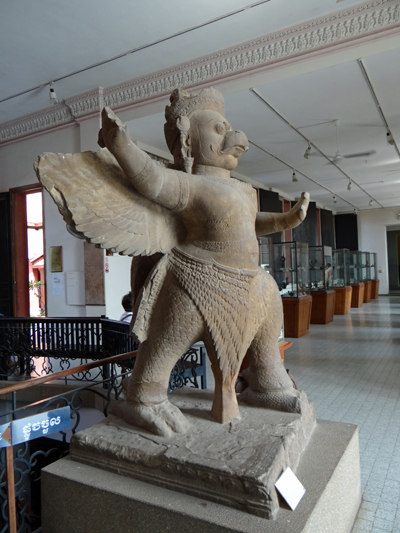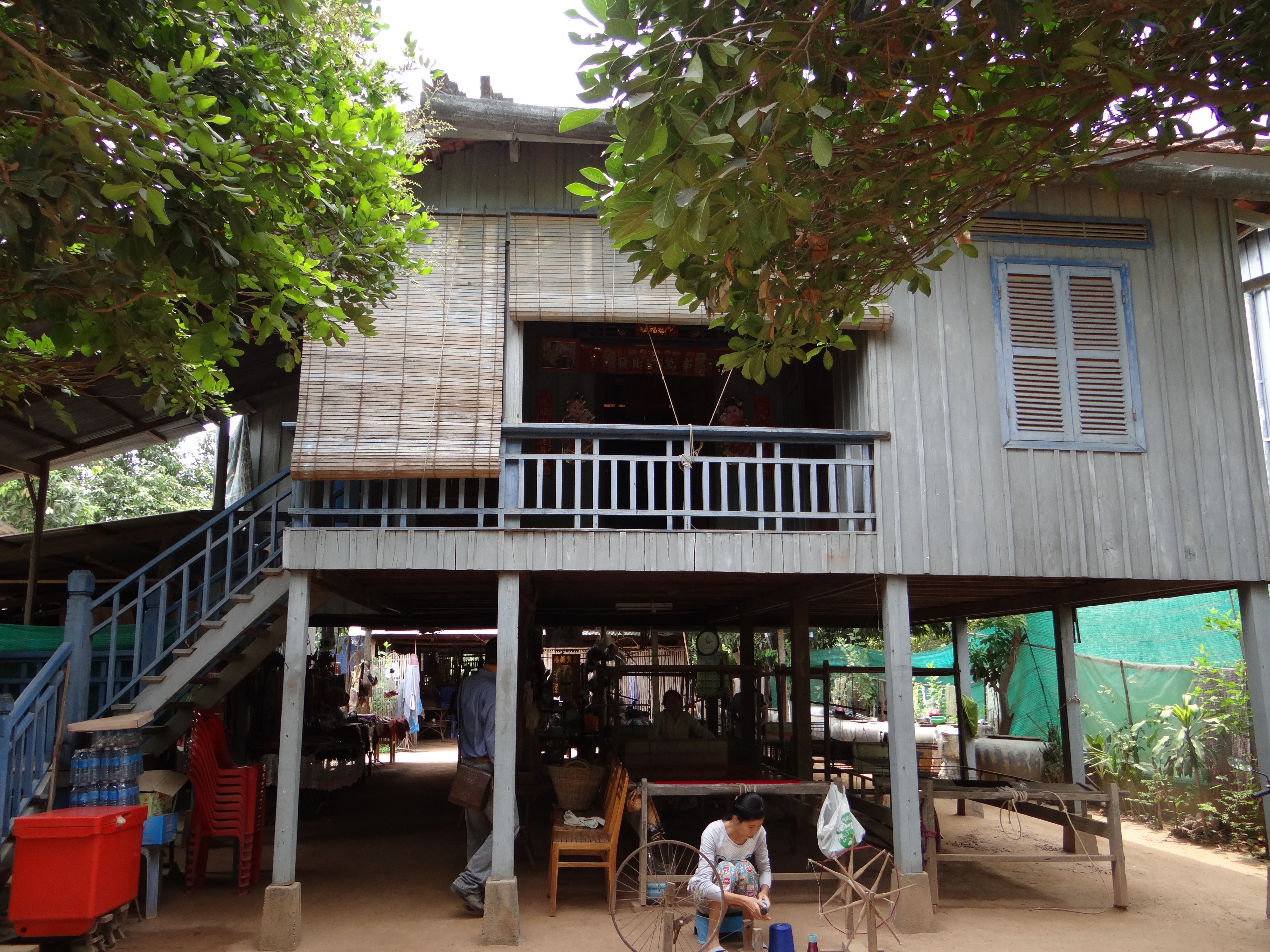|
|
|||||||||
|
|
|||||||||
|
|
Phnom Penh, 1 May True to our aim of seeing what we didn't see 11 years ago, we first toured the National Museum today. In 2004, it was on my to-do list, but the heat of that particular day wilted any resolve I had to do the cultural thing. So, today it was my chance to see what has been saved of Cambodia's cultural history. It was actually a bit sparse, but that suited me. I'm not a big one for hours in museums. Our guide, in halting English, explained something of the history of the Khmer people and their various incarnations through Hinduism and Buddhism, the belief today acknowledged by 90percent of the population. Photos of the exhibits weren't allowed, except for the massive Garuda in the entry (right) who greeted all visitors. I couldn't see why the prohibition, since the relics were mostly what remains of bronze and sandstone statues retrieved from the waters of the Angkor Kingdom or its predecessor. Photos would hardly have harmed them *** The Mekong River, even in the dry season (now), is impressive. In Phnom Penh, a few bridges have been built across it, but a vehicular ferry is also a popular way to get over to the villages on the other side. Boarding these ferries is a lengthy process with much to-and-fro-ing as drivers jockey for position, while pedestrians and motorbikes drive recklessly around them to get on board. On the far side next to the landing ramp was a floating village of about 50 structures, occupied, so we were told, by Vietnamese, "probably illegals" who couldn't afford land! There's not much love lost between commoner Khmer people and the Vietnamese who now total a few million in Cambodia. Reading between the lines of websites and English-language newspapers it seems that the influence of the Vietnamese on the government is not always thought to be a good thing.. Our destination was Prek Bongkong village, where a Khmer lady had her silk weavers set up. Cambodian village houses are mostly high up on stilts, leaving plenty of room for storage, or in this case, a home business underneath. Here, there were three weaving looms installed, and workers to operate them, plus of course, the necessary primary producer, the silk worms. As I warned Dave, I was going to have to buy something here - fortunately, pure silk scarves don't take up much weight or space in the luggage. At $11 each, they were cheap for me, although the business probably sold them for much less in the markets which operate around Phnom Penh. I wasn't in the mood to bargain over a few dollars. below: Houses floating on the Mekong, and a car ferry across to the other side. |
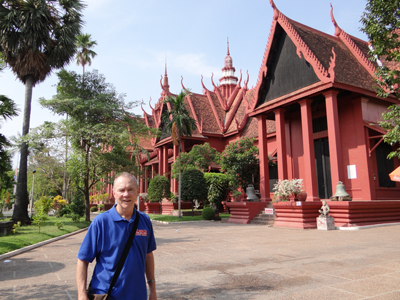
|
|||||||
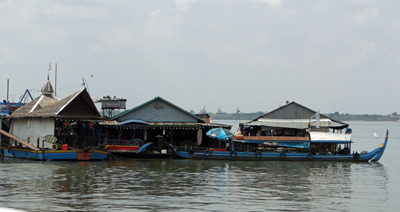 |
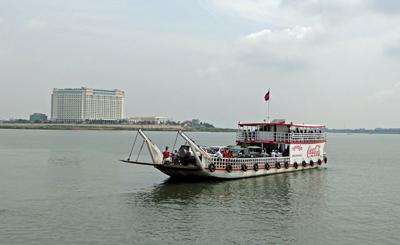 |
||||||||
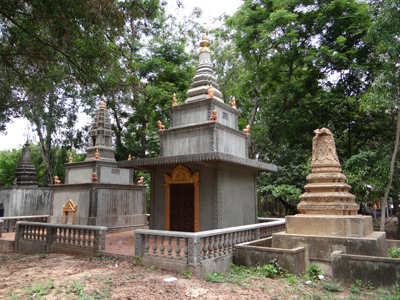 While we were over the other side of the river, we visited a
village pagoda, and were given an explanation of the Buddhist burial
rites which necessitate elaborate stupas, much like our
headstones in cemeteries, although here, the stupas were
huge, and must have been very expensive. Sometimes the
stupas are built while their intended occupant is still alive,
and therefore has some say in its design and cost! While we were over the other side of the river, we visited a
village pagoda, and were given an explanation of the Buddhist burial
rites which necessitate elaborate stupas, much like our
headstones in cemeteries, although here, the stupas were
huge, and must have been very expensive. Sometimes the
stupas are built while their intended occupant is still alive,
and therefore has some say in its design and cost!They accommodate the remains of never more than two people, for example, a married couple, unlike family vaults in the West where often a dozen bodies are resting. Tonight, we detoured from our plan of doing only new stuff while in Phnom Penh, and returned to the FCC (Foreign Correspondents' Club) on the esplanade overlooking the junction of the Mekong and Tonle Sap Rivers (below). It was still much as I remembered - imbued with colonial atmosphere, so-so food and plenty of middle aged and older tourists who remember the news reports of the Indo-Chinese wars of the 1960s and 70s. |
|||||||||
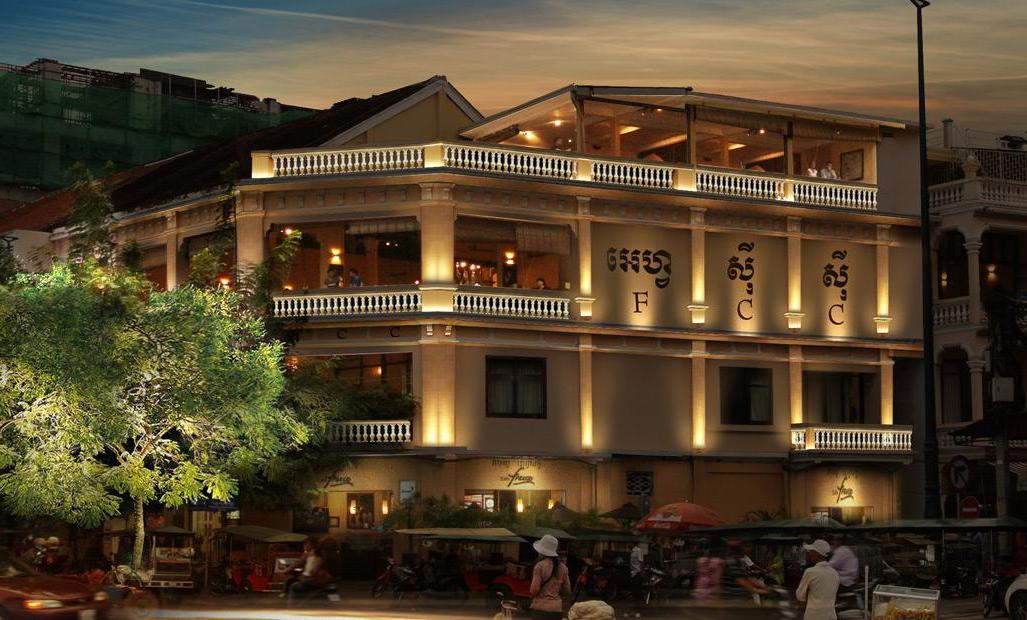 The walls were adorned by several photos of the Cambodian part in
the wars, but one photo I remembered from 10 years ago, by acclaimed
Australian cameraman Neil Davis, was missing. Probably
souvenired. The walls were adorned by several photos of the Cambodian part in
the wars, but one photo I remembered from 10 years ago, by acclaimed
Australian cameraman Neil Davis, was missing. Probably
souvenired.Our chances of a good night's sleep tonight at our otherwise charming hotel will be dependant on the neighbours. A few times last night and early this morning, it sounded like a canine World War 3 had broken out. |
|||||||||

